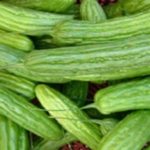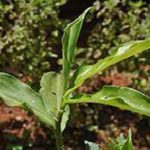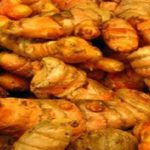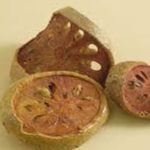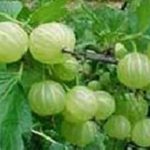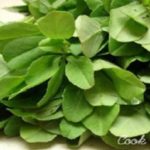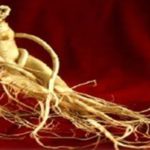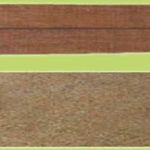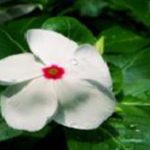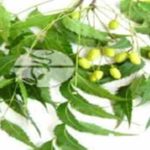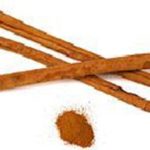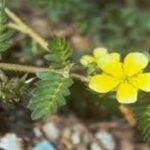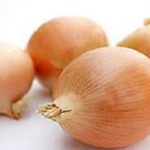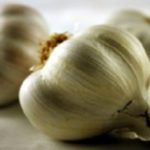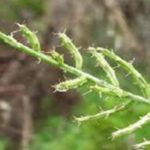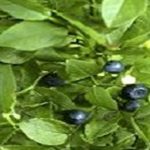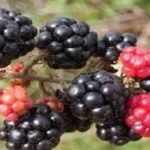A REVIEW- PHYTOMEDICINES USED IN TREATMENT OF DIABETES
HTML Full TextA REVIEW- PHYTOMEDICINES USED IN TREATMENT OF DIABETES
Mohd. Yaqub Khan * 1, Irfan Aziz 1, Bipin Bihari 2, Hemant Kumar 3, Maryada Roy 4 and Vikas Kumar Verma 2
Azad Institute of Pharmacy & Research 1, Azadpur, Adjacent CRPF Camp, Bijnour, Lucknow - 226002, Uttar Pradesh, India.
Saroj Institute of Technology and Management 2, Ahimamau P.O. Arjunganj Sultanpur Road, Lucknow -226002, Uttar Pradesh, India.
Hygia Institute of Pharmacy 3, Lucknow - 226020, Uttar Pradesh, India.
Mangalayatan University 4, Aligarh - 202145, Uttar Pradesh, India.
ABSTRACT: Diabetes mellitus (DM), both insulin-dependent DM (IDDM) and non-insulin dependent DM (NIDDM) is a common and serious metabolic disorder throughout the world. Traditional plant treatments have been used throughout the world for the therapy of diabetes mellitus. Among many medications and other alternative medicines, several herbs have been known to cure and control diabetes; additionally, they have no side effects. The present paper is an attempt to list the plants with anti-diabetic and related beneficial effects originating from different parts of the world. History showed that medicinal plants had been used in traditional healing around the world for a long time to treat diabetes; this is because such herbal plants have hypoglycemic properties and other beneficial properties, as reported in scientific literature. The medicinal plants, besides having natural therapeutic values against various diseases and considerable works have been done on these plants to treat diabetes mellitus, describes that the anti-diabetic activity of medicinal plants is due to the presence of phenolic compounds, flavonoids, terpenoids, coumarins and other constituents which show a reduction in blood glucose levels. Some of these herbal plants and their active chemical constituents which have a role in the management of diabetes mellitus are compiled here and discussed in this review.
| Keywords: |
Diabetes mellitus, Hypoglycemic agents, Herbal medicines, Sulphonylureas, Biguanides
INTRODUCTION: Diabetes mellitus is a group of metabolic diseases characterized by high blood sugar (glucose) levels that result from defects in insulin secretion, or action, or both. Diabetes mellitus, commonly referred to as diabetes (as it will be in this article) was first identified as a disease associated with "sweet urine," and excessive muscle loss in the ancient world.
Elevated levels of blood glucose (hyperglycemia) lead to spillage of glucose into the urine, hence the term sweet urine. Normally, blood glucose levels are tightly controlled by insulin, a hormone produced by the pancreas. Insulin lowers the blood glucose level. When the blood glucose elevates (for example, after eating food), insulin is released from the pancreas to normalize the glucose level. In patients with diabetes, the absence or insufficient production of insulin causes hyperglycemia. Diabetes is a chronic medical condition, meaning that although it can be controlled, it lasts a lifetime 1.
Causes of Diabetes: Insufficient production of insulin (either absolutely or relative to the body's needs), production of defective insulin (which is uncommon), or the inability of cells to use insulin properly and efficiently leads to hyperglycemia and diabetes. This latter condition affects mostly the cells of muscle and fat tissues, and results in a condition known as "insulin resistance." This is the primary problem in type 2 diabetes.
TABLE 1: BLOOD SUGAR LEVEL IN NORMAL & DIABETIC PATIENTS
| Category of a person | Fasting Value | Post- Prandial | |
| Minimum Value | Maximum Value | Value 2 h after consuming glucose | |
| Normal | 70 | 100 | Less than 140 |
| Early Diabetes | 101 | 126 | 140 to 200 |
| Established Diabetes | More than 126 | - | More than 200 |
* All values are in mg/100 ml
The absolute lack of insulin, usually secondary to a destructive process affecting the insulin-producing beta cells in the pancreas, is the main disorder in type 1 diabetes. In type 2 diabetes, there also is a steady decline of beta cells that adds to the process of elevated blood sugars. Essentially, if someone is resistant to insulin, the body can, to some degree, increase production of insulin and overcome the level of resistance. After a time, if production decreases and insulin cannot be released as vigorously, hyperglycemia develops.
Glucose is a simple sugar found in food. Glucose is an essential nutrient that provides energy for the proper functioning of the body cells. Carbohydrates are broken down in the small intestine, and the glucose in digested food is then absorbed by the intestinal cells into the bloodstream and is carried by the bloodstream to all the cells in the body where it is utilized. However, glucose cannot enter the cells alone and needs insulin to aid in its transport into the cells. Without insulin, the cells become starved of glucose energy despite the presence of abundant glucose in the bloodstream.
In certain types of diabetes, the cells' inability to utilize glucose gives rise to the ironic situation of "starvation in the midst of plenty." The abundant, unutilized glucose is wastefully excreted in the urine. Insulin is a hormone that is produced by specialized cells (beta cells) of the pancreas. (The pancreas is a deep-seated organ in the abdomen located behind the stomach.) In addition to helping glucose enter the cells, insulin is also important in tightly regulating the level of glucose in the blood. After a meal, the blood glucose level rises.
In response to the increased glucose level, the pancreas normally releases more insulin into the bloodstream to help glucose enter the cells and lower blood glucose levels after a meal. When the blood glucose levels are lowered, the insulin release from the pancreas is turned down. It is important to note that even in the fasting state there is a low steady release of insulin than fluctuates a bit and helps to maintain a steady blood sugar level during fasting. In normal individuals, such a regulatory system helps to keep blood glucose levels in a tightly controlled range. As outlined above, in patients with diabetes, the insulin is either absent, relatively insufficient for the body's needs, or not used properly by the body. All of these factors cause elevated levels of blood glucose (hyperglycemia) 2.
Herbal Treatment of Diabetes Mellitus:
Bitter Melon:
Biological Source: It is obtained from the edible fruit of Momordica charantia, belonging to the family Cucurbitaceae.
Chemical constituents: The plant contains several biologically active compounds-
- Chiefly momordicin I & momordicin II, cucurbitacin B
- Glycosides (momordin, charantin, charantosides, goyaglycosides)
- Terpenoid compounds- momordicinin, momor-dicilin, momordol
- Cytotoxic (ribosome inactivating) proteins such as momorcharin & momordin 3.
Uses: Bitter melon is used as anti-diabetic. It contains a lectin that has insulin-like activity due to its non-protein specific linking together to insulin receptors. This lectin lowers blood glucose level by acting on peripheral tissues. Lectin is a major contributor to hypoglycemic effect 4.
Scientific Work is Done: Triterpenoids isolated from bitter melon has shown anti-diabetic activity5.
Dosage Form: It is used as fresh juice, tincture, juice extract & powered leaf.
Dose: Fresh juice- 57-113 gm daily, tincture- 1.3 ml/twice/daily, juice extract 300-600 mg, powered leaf- 1-2 gm.
Fiery Costus:
Biological Source: It is obtained from the leaves of the plant Costus igneus, belonging to the family Costaceae.
Chemical Constituents: The main chemical constituents are Beta-carotene, deoxyribose, phenol, flavonoids, and insulin precursors.
Uses: The leaves of insulin plant reduced the fasting and postprandial blood sugar levels, bringing them down towards normal. Reduction in the fasting and the postprandial blood sugar levels with leaves of insulin plant was comparable with that obtained with Glibenclamide 500 µg/kg at 250 mg/kg/day and 500 mg/kg/day of powdered leaves of the insulin plant. The hypoglycemic action can be due to the release of insulin, insulin-sensitizing action or a combination of both. Hence, further studies need to be undertaken to determine the mechanism of action by measurement of either insulin or 'C' peptide level 6.
Scientific Work is Done: Costus igneus has shown the effect on hyperglycemia.7
Dosage Forms: It is used as an oral hypoglycemic agent, or as i.v. injection.
Dose: Tablet- 1 tablet/ day.
Dandelion:
Biological Source: It is obtained from the leaves of Taraxacum officinale, belonging to the family Asteraceae.
Chemical Constituents:
- Sesquiterpene lactones (bitters): taraxinic acid (taraxacin), tetrahydroridentin B
- Triterpenoids and sterols: taraxasterol, taraxerol, cycloartenol, beta-sitosterol
- Other: Vitamin A, Vitamin C, tannins, alkaloids, pectin, inulin, starch, potassium, beta carotene, caffeic acid, flavonoids (apigenin) 8
Uses: It is a good antidiabetic drug. It can lower the blood glucose level. Tests on diabetic mice show that dandelion extract may help regulate blood sugar and keep cholesterol in check 9.
Scientific Work is Done: Dandelion has shown antihyperglycemic effect 10.
Dosage forms: Capsules, tinctures, and teas containing dandelion leaves, roots, flowers, or the entire plant are used.
Doses:
- Capsules taken after each meal.
- Adult doses: There is disagreement on the optimal form and dose of dandelion. Reputable physicians and herbalists recommend a range of doses
- Fresh leaves: 4-10 grams daily
- Dried leaves: 4-10 grams daily
- Fresh leaf juice: 1 tsp (4-8 ml) twice daily
- Fluid extract: 1-2 teaspoons daily
- Fresh roots: 2-8 grams daily
- Dried powdered extract: 250-1000 mg three to four times daily
- Tea: Pour 2 cups boiling water over one ounce of fresh leaves and steep for 10 minutes.
- Or, boil 1 cup of water with 2-3 tsp of dried, cut root for 15 min cool.
- Pediatric dosages: Unknown
French Lilac:
Biological Source: It consists of the aerial parts of the plant, flowers, leaf, stem, seeds of the plant Galega officinalis, belonging to the family Fabaceae.
Chemical Constituents: Oleanane & ursane type triterpenoids like sophoradiol, soyasapogenol b, & 9-sitosterol, sophorediol, galactogil, galegine, paganini, hydroxygalegine, vasicinone, alkaloids like lutein, pentahydroxyflavone 5 glucoside, luteoline, galuteoline, luteoline 5 glucosides, flavonoids, saponins etc.11
Uses: It has been known since the middle ages for relieving the symptoms of diabetes mellitus. Upon analysis, it turned out to contain compounds related to guanidine, a substance that decreases blood sugar by mechanisms including a decrease in insulin resistance but was too toxic for human use. Georges Tanret identified an alkaloid from this plant (galegine) that was less toxic, and this was evaluated in clinical trials in patients with diabetes in the 1920s and 1930s.
Other related compounds were being investigated clinically at this time, including biguanide derivatives. This work led ultimately to the discovery of metformin (Glucophage), currently recommended in international guidelines for diabetes management as the first choice for antidiabetic pharmacotherapy alongside diet and exercise 12 and the older agent phenformin, which has been withdrawn in most countries due to an unacceptable risk of lactic acidosis (the risk of lactic acidosis with metformin is no higher than with other anti-diabetic therapies when it is prescribed according to its label) 13. The study of galegine and related molecules in the first half of the 20th century is regarded as an important milestone in the development of oral anti-diabetic pharmacotherapy 14.
Dosage Form: It is used as herbal infusion, tincture & leaves.
Doses: Herbal infusion- twice daily, tincture- thrice daily.
Gulvel:
Biological Source: It is obtained from the stems and roots of Tinospora cordifolia, belonging to the family Menispermaceae.
Chemical Constituents: The active adaptogenic constituents are diterpene compounds including tinosporone, tinosporic acid, cordifolisides A to E, syringen, the yellow alkaloid, berberine, Giloin, crude Giloininand, a glucosidal bitter principle as well as polysaccharides, including arabinogalactan polysaccharide (TSP).
Picrotene and bergenin were also found in the plant. The active principles of Tinospora cordifolia, a traditional Indian medicinal plant were found to possess anti-complementary and immuno-modulatory activities 15.
Use: It is used as antidiabetic 16.
Scientific Work is Done: Tinospora cordifolia has shown Anti-diabetic activity 17.
Dosage Form: Aqueous extract of roots is used.
Dose: Aqueous extract of root- 2.5g, 5 g/ kg body weight.
Turmeric:
Biological Source: It consists of dried fresh rhizomes of the plant Curcuma longa belonging to the family Zingiberaceae.
Chemical Constituents: Turmeric contains 5% of volatile oil, resin, zingiberaceous starch grains & yellow colored curcuminoids. The chief component of curcuminoids is known as curcumin.
The volatile oil is composed of mono and sesquiterpenes such as alpha & beta pinene, alpha- phellandrene, camphor, camphene, zingiberene, alpha & beta curcumins 18.
Use: It is used as anti-diabetic drug 19.
Scientific Works Did:
- Turmeric has shown hypoglycemic, hypo-lipidemic & antioxidant activity 20.
- Turmeric has shown an effect in diabetes 21.
Dosage Form: The powdered form of turmeric is used.
Dose: Powdered turmeric- 500-8000 mg/ day.
Gurmar:
Biological Source: It is obtained from the leaves & roots of Gymnema Sylvestre, belonging to the family Asclepiadaceae.
Chemical Constituents: The principal active ingredient is gymnemic acid. The other compounds found are calcium oxalate, an anthraquinone compound, tartaric acid, cellulose but no tannin is present 22.
Uses:
- This is one of the main herbs used for healing diabetes mellitus.
- Gymnema removes sugar from the pancreas, restores pancreatic function.
- Gymnema stimulates the circulatory system, increases urine secretion 23.
Scientific Works Did:
- Gymnema Sylvestre has shown Enzyme changes and glucose utilization 24.
- Gymnema Sylvestre has shown an effect in controlling blood glucose level 25.
Dosage Forms: It is used as a water-soluble acidic solution & as a powered leaf.
Doses: Power leaf- 2-4 mg/daily, Water soluble acidic solution- 400 mg/day.
Bael:
Biological Source: It consists of unripe or half-ripe fruits of the plant known as Aegle marmelos, belonging to the family Rutaceae.
Chemical Constituents: The chief constituent of the drug is marmalizing (0.5%) which is a furocoumarin. Other coumarins are marmesin, psoralen, umbelliferone. The drug also contains carbohydrate, protein, volatile oil & tannins. The pulp also contains a good amount of vitamin A & C. Two alkaloids, Omethylhalfordinol and isopentylhalfordinol has been isolated from fruits26.
Use: It is used as anti-diabetic drug 27.
Scientific Work is Done: Leaf & callus extract of Aegle marmelos has shown anti-diabetic activity 28.
Dosage forms: It is used as aqueous decoction & aqueous leaf extract.
Doses: Aqueous decoction- 1 ml/ 100 mg, aqueous leaf extract- 1 gm/ kg.
Amla:
Biological Source: It is obtained from the dried as well as fresh fruits of Emblica Officinalis, belonging to the family Euphorbiaceae.
Chemical Constituents: Amla is a rich natural source of vitamin C. It contains 0.5% fat, phyllemblin, 5% tannin. It also contains phosphorus, iron & calcium. It contains pectin & 75% moisture 29.
Use: It is used as anti-diabetic 30.
Scientific Work is Done: Emblica officinalis has shown Anti-diabetic activity in animal models 31.
Dosage Form: It is used as amalaki capsules.
Dose: Capsule- 1 capsule/ twice a day before a meal.
Fenugreek:
Biological Source: It is obtained from the leaves and seeds of Trigonella foenum- graecum, belonging to the family Fabaceae.
Chemical Constituents: The nicotinic acid, alkaloid trigonelline, and coumarin contained by a defatted section of the seed of fenugreek prove to be the responsible, active ingredient for its anti-diabetic properties 32.
Uses: It is used as anti-diabetic. The fiber-rich fraction of fenugreek seeds can lower blood sugar levels in people with type II diabetes 33.
Scientific Works Did:
- Metabolic and molecular action of Trigonella foenum-graecum (fenugreek) and trace metals has been shown in experimental diabetic tissues 34.
- Fenugreek seed has shown the postprandial hypoglycemic activity 35.
Dosage Forms: The leaves & seeds of fenugreek are used in therapeutic purpose.
Doses: Leaves- 5-30 gm/ thrice daily with a meal, Seeds- 3 ½ ounces/ daily.
Ginseng:
Biological Source: It is obtained from the dried roots of Panax ginseng, belonging to the family Araliaceae.
Chemical Constituents: Ginseng contains a mixture of several saponin glycosides, belonging to the triterpenoid group. They are grouped as follows-
- Ginsenosides
- Panaxosides
- Chikusetsusaponin
Ginsenosides contain aglycone dammarol while panaxosides have oleanolic acid as an aglycone. About 13 ginsenosides have been identified. Panaxosides give oleanolic acid, panaxadiol & panaxatriol on decomposition.36
Use: It is used as hypoglycemic agent.37
Scientific Works have Done:
- Use of Ginseng in diabetes 38.
- Ginseng has shown hypoglycemic effect 39.
Dosage Forms: Dried root and tincture are used.
Doses: Dried root- 0.5-9 gm/ daily, tincture- 0.2- 3/ one to three times daily.
Indian Kino Tree:
Biological Source: It is obtained from the dried juice of the plant Pterocarpus marsupium & obtained by making vertical incisions to the stem bark & it belongs to the family Leguminaceae.
Chemical Constituents: It contains about 70%- 80% of kino-tannic acid, kino- red, k- pyrocatechin (catechol), resin & gallic acid. kinotannic acid is glucosidal tannin, while kino- red is an anhydride of kinoin. Kinoin is an insoluble phlobaphene & is produced by the action of oxidase enzyme. It is darker in color than kinotannic acid.
If the juice is boiled during drying, enzyme gets destroyed & thus insolubilisation & darkening is prevented.40
Uses: The heartwood of the plant is used in the treatment of diabetes. The gum resin is the only herbal product ever found to regenerate B cells that make insulin in the pancreas.41
Scientific Works have Done:
- Phenolics from Pterocarpus marsupium has shown antihyperglycemic activity.42
- Hypoglycaemic activity of Pterocarpus marsupium has been seen.43
Dosage Forms: The wood extracts & bark decoction is used.
Doses: Wood extract (pterostilbene) - 10 mg/ kg, bark decoction- 1 gm/ 100 mg body weight for 10 days.
Nayantara:
Biological Source: It is obtained from the whole dried plant of Catharanthus roseus, belonging to the family Apocynaceae.
Chemical Constituents: The main active compounds here are alkaloids & tannins. The major alkaloid is vincamine. An aclosely related semi-synthetic derivative of vincamine is vinpocetine. There are over 130 constituents with an indole or dihydroindole structure, including the principal component vindoline, vinblastine, vincristine, learocristine, vinine, ajmalicine, leurocine, vincamine etc. 44
Use: It is used as anti-hyperglycemic agent 45.
Scientific Works Have Done:
- Effect of an antidiabetic extract of Catharanthus roseus has been seen.46
- The juice of fresh leaves of Catharanthus roseus has shown reduced blood glucose.47
Dosage forms: It is used as tincture & infusion.
Doses: Tincture- 1-2 ml/ 3 times daily, infusion- 2-3 cups daily.
Neem:
Biological Source: It is obtained from the leaves of Azadirachta indica, belonging to the family Meliaceae.
Chemical constituents: It contains glycerides of saturated & unsaturated fatty acids. The main fatty acids are oleic (50%) & stearic (20%) acids. The oil contains 2.0% of bitters, which are sulpher containing compounds, nimbidin, nimbin, nimbinin, nimbidol. The unsaponifiable part contains nimbosterol (0.03%). The main limonoid that it contains is azadirachtin, but it also contains azadiradione, fraxinellone, nimbin, salannin, salannol, vepinin, vilasinin.48
Use: It is used in diabetes 49.
Scientific Work is Done: Azadirachta indica leaf extract has shown anti-hyperglycemic and anti-dyslipidemic activity 50.
Dosage Form: Capsules are used.
Dose: Capsule- 1-2 capsules/ twice daily.
Cinnamon:
Biological Source: It consists of the dried inner bark of shoots of coppiced trees of Cinnamomum zeylanicum, belonging to the family Lauraceae.
Chemical constituents: Cinnamon bark contains volatile oil, tannins, mucilage, calcium oxalate, starch & mannitol. Cinnamon oil contains cinnamaldehyde, other terpenes like phellandrene, pinene, cymene, caryophyllene 51.
Uses: Cinnamon is used in the treatment of type II diabetes mellitus & insulin resistance 52.
Scientific Works Did:
- Alcoholic extract of Cinnamomum zeylanicum leaves has shown anti-diabetic activity.53
- Cinnamon improves glucose and lipid of people 54.
Dosage Form: It is mostly used as a powdered form.
Dose: Powder- ½ teaspoon daily
Saptrangi:
Biological Source: It is obtained from the stem, root & leaves of Salacia oblonga, belonging to the family Hippocrateaceae.
Chemical Constituents: It contains 2 potent alpha- glycosidase inhibitors- salicinol, kotalanol, ses-quiterpene (salasol A & B), triterpenes (salasones A-E, salaquinones A & B) 55.
Uses: It is used as anti-diabetic. It binds to intestinal enzymes alpha- -glucosidases that break down carbohydrate into glucose in body 56.
Scientific Work is Done: Salacia oblonga has shown antidiabetic potential 57.
Dosage Form: Aqueous extract of the root bark is used.
Dose: Aqueous extract of root bark- 250 ml/ kg
Onion:
Biological Source: It is obtained from the bulb of the plant Allium cepa, belonging to the family Liliaceae.
Chemical Constituents:
- It contains the essential amino acid composition of arginine, histidine, lysine, tryptophan, phenylalanine, methionine, threonine, leucine & isoleucine.
- The bulb on steam distillation yields an essential oil known as onion oil. The bulb contains several phenolic acids, such as protocatechuic acid, p-hydroxybenzoic acid, vanillic acid, caffeic acid, & o & p- coumaric acids. Citric, abietic, oxalic and maleic acids are also present. It also contains several oligosaccharides 58.
Uses: Onion consists of an active ingredient called APDS (allyl propyl disulphide). APDS has been shown to block the breakdown of insulin by the liver and possibly to stimulate insulin production by the pancreas, thus increasing the amount of insulin and reducing sugar levels in the blood. It is found to lower lipid levels, inhibit platelet aggregation and are antihypertensive. So, liberal use of onion is recommended for diabetes patients 59.
Scientific Work is Done: Clinical hypoglycemic effect of Allium cepa (Red onion) has been seen 60.
Dosage Forms: Raw & boiled onion extracts are used. APDS can also be administered orally.
Dose: APDS- 125 mg/ kg to fasting humans.
Garlic:
Biological Source: It consists of bulbs of the plant known as Allium sativum, belonging to the Liliaceae.
Chemical Constituents:
- Garlic bulbs contain 29% of carbohydrate, about 56% of proteins (albumin), 0.1% of fat, mucilage, and 0.06- 0.1% of volatile oil. It also contains phosphorus, iron & copper.
- Volatile oil of the drug is the chief active constituent and contains allyl propyl disulphide, diallyl disulphide, alliin, and allicin.
- Alliin by the action of enzyme allinlyase is converted into allicin. Garlic oil is yellow in colour 61.
Uses: Garlic cloves lower blood sugar significantly. Subsequently, scientific studies have proven that the presence of disulfides in garlic such as allyl propyl and diallyl sulfide have played a role in the decrease of blood glucose levels.
They have been seen to have actions similar to Tolbutamide, a sulfonylurea drug of the first generation. They act on the pancreas and stimulate the production of insulin to control the sugar levels in the blood. It is those patients with type 2 diabetes who benefit the most out of this.62
Scientific Work is Done: Anti-diabetic and hypolipidaemic properties of garlic have been seen 63.
Dosage Form: Juice extract of it is used.
Dose: Juice extract- 50 ml/daily
Opuntia:
Biological Source: It is obtained from the stems of Opuntia ficusindica, belonging to the family Cactaceae.
Chemical Constituents: The main chemical constitutes are 3- methoxytyramine 64, candicine 65, hordinine 66, N- methyltyramine 67, tyramine 68 etc.
Use: It is used in the treatment of type II diabetes.
Scientific Work is Done: Polysaccharides from Opuntia have shown anti-diabetic effects. 69
Dosage Form: Boiled stems are used.
Dose: Oiled stem- 100-500/daily
Blueberry:
Biological Source: It is obtained from the leaves of Vaccinium myrtillus, belonging to the family Ericaceae.
Chemical Constituents: The main chemical constituents are flavonoids (hyperoside, isoquercitrin, quercitrin, astragaline), anthocyanosides (myrtillin, malvidin, cyanidin, delphinidin, and others), catechin tannins (2-10%), others (carbohydrates including invertose, organic acids, pectins, alkaloids) 70.
Uses: Blueberry is a natural herb of controlling or lowering blood sugar levels when they are slightly elevated. It contains an active agent known as myrtillin which is an anthocyanoside. It is weaker and less toxic than insulin.71
Scientific Works Did:
- Vaccinium myrtillus has shown antidiabetic activity 72.
- Vaccinium myrtillus has shown hypoglycaemic effect 73.
Dosage Form: Leaf extracts are used.
Dose: Leaf extract- 3 cups/ day.
Blackberry:
Biological Source: It is obtained from the edible fruits of the plant Rubus fruticosus belonging to the family Rosaceae.
Chemical Constituents: The principal compounds isolated from red blackberry leaves are hydrolyzable tannins. Simple compounds such as 1,2,6-tri-O -galloyl-glucose 74 and penta- O -galloyl glucose are oxidatively coupled through galloyl groups to form more complex compounds such as casuarictin, pedunculagin, sanguine H-6 75, and lambertianin A 76, with as many as 15 galloyl groups coupled to 3 glucose units 77.
Common flavonoids have also been isolated from the leaves. Rutin was isolated 78, as were kaempferol, quercetin, quivering, and kaempferol- 3- O -â-D-glucuronopyranoside 79. Major leaf volatiles studied by GC-MS includes the monoterpenes geraniol and linalool as well as 1- octane-3-ol and decanal 80. Phenolic acids common to the Rosaceae family have also been identified 81.
Use: It is used as anti-diabetic.
Dosage form: It is used as fruit powder.
Dose: Dried fruit powder- 20 mg/day.
Blond Psyllium (Blond Plantago): Blond psyllium seed husk orally seems to significantly reduce postprandial serum glucose, insulin levels, total serum cholesterol, and low-density lipoprotein (LDL) cholesterol levels in patients with Type II diabetes and hypercholesterolemia. Blond psyllium seems to reduce postprandial blood glucose levels by about 14% to 20%, total cholesterol by about 9%, and LDL cholesterol by 13%. Blonde psyllium also seems to lower postprandial glucose levels in patients with Type I diabetes. Blond psyllium's maximum effect on glucose levels occurs when psyllium is mixed and consumed with foods. Blond psyllium does not lower postprandial glucose in people who do not have diabetes.
Devil’s Claw: Devil's Claw is native to south and central Africa. Its medicinal value lies in its fleshy roots, which are sliced, chopped, or pulverized while fresh. Some evidence shows that this herb might decrease blood glucose and have additive effects with medication used in diabetes.
Ginger (Zingiber officinale): Preliminary research suggests ginger might increase insulin levels. Theoretically, it could have an additive effect with medication used to treat diabetes and cause hypoglycemia.
Glucomannan (Konnyaku Root): A member of the yam family, this herb is high in fiber and can help normalize blood sugar, relieve stress on the pancreas.
Holy Basil (Hot Basil): Preliminary evidence suggests that holy leaf extract may decrease fasting (17.6%) and postprandial blood glucose in patients with Type II diabetes.
Jambolan (Syzygium cumini): A close relative of the clove tree Syzygium aromaticum, jambolan is native to East India and the Malay Peninsula, but has spread as far as China and Australia and is grown in the Caribbean. Only the bark of the jambolan has proven medicinal value, although the seeds are often used as well. In Asian medicine, it is used for diabetes, diarrhoea, sore throat, and diseases of the spleen.
Kudzu: Kudzu is native to Japan and China, however, it grows extremely well in the Southern United States. This vine, when left uncontrolled, will eventually grow over almost any fixed object or other vegetation. Kudzu or its constituents might have hypoglycemic, hypocholesterolemic, and antioxidant activity.
Prickly Pear Cactus (Nopal): There is some preliminary clinical evidence that prickly pear cactus used orally can decrease blood glucose levels in patients with Type II diabetes. Single doses can decrease blood glucose levels by 17% to 46% in some patients. However, it is not known if extended daily use can consistently lower blood glucose levels and decrease HbA1c levels. Only the broiled stems of the specific species Opuntia streptacantha seem to be beneficial and raw or crude stems do not seem to decrease glucose levels. Other prickly pear cactus species do not seem to lower blood glucose levels significantly.
Red Sandalwood (Pterocarpus marsupium): Like Gymnema Sylvestre, this is a traditional herb used in India to help rejuvenate the insulin-producing pancreatic beta cells. One group of researchers investigating diabetic rats compared Pterocarpus' observed effects on blood glucose levels to those of metformin, a drug familiar to many people with diabetes.
Stevia (Sweet Herb): Stevia is a non-caloric herb, native to Paraguay, which has been used as a sweetener and flavor enhancer for centuries. Clinical research suggests that stevioside, a constituent of Stevia, might reduce postprandial glucose levels by 18% in people with Type II diabetes.
Herbal Home Remedies for Diabetes: 82 Diabetes has been referred to as 'Madhumeh' by Ayurveda. This disease is caused by an imbalance of the hormone insulin (which controls the sugar level of blood) that has to be taken externally by a diabetes patient regularly. Ayurvedic therapies recommend many Indian herbs and general practices to improve the secretion of insulin through natural ways. Some of the home and herbal remedies prescribed by Ayurveda are described below.
- Include turmeric and cinnamon in your diets. You can even take one teaspoon of cinnamon powder daily.
- Soak one teaspoon of fenugreek seeds in 1 cup of water overnight. Drink this water in the morning on an empty stomach and eat the seeds.
- Take a bitter gourd, remove the seeds and saturate in a cup of water. Drain this preparation and drink every morning.
- Boil around fifteen mango leaves in one cup of water. Keep it overnight and filter in the morning. Drink every morning on an empty stomach.
- Avoid oily, fried and starchy foodstuffs.
- Avoid coffee, sugar, refined flour and alcohol.
- Eat smaller meals (low-fat diet) five to six times a day instead of having three large meals.
- Increase intake of vegetables like spinach, cucumber, tomatoes, onion, sprouts, beans, garlic, etc.
- Refrain from taking the stress.
- Do regular exercise. Walk for at least 40 minutes a day.
- Avoid red meat and excessive salt in your meals. Fish and soy can be taken due to their good protein value.
- Bitter herbs like Azadirachta Indica (Neem), bitter gourd and fenugreek are like miracle drugs for diabetics. Take them in any form you can.
- Avoid white bread, rice, potatoes, sweet and sugary foods.
- Chew 8-10 curry leaves (Meetha Neem) on an empty stomach. It is very effective for bringing the urine and blood sugar to their normal levels, even in hereditary diabetic patients.
- Emblica Officinalis or Indian gooseberry (Amla) is very beneficial for diabetic patients. Prepare a fine powder of dry amala and put this powder in water. Allow it to stand for some time. Then filter the solution and mix some lemon juice in it. Take this early in the morning. You can even use the extract of amla easily available in the market.
- Syzygium cumini or Indian plum (Jamun) is considered a panacea for diabetes. Eating this fruit is very beneficial for patients of diabetes. More than fruit, the seeds of jamun fruit is beneficial when taken in powdered form mixed with some water.
- The holy fruit of India- the bel fruit or the Aegle marmelos has anti-diabetic properties. The herbal extract of its leaves should be taken preferably with a pinch of black pepper.
- Garlic contains allicin that helps in reducing sugar level in blood.
- The leaves of Butea monosperma (Palas) tree are very useful in diabetes. They reduce blood sugar and are useful in glycosuria- the presence of a large amount of glucose in urine.
- Tenner’s cassia (Tarwar) is an effective remedy for diabetes. A decoction of the whole plant or bubs is used to treat diabetes. The powder of the herb, mixed with honey, is very effective. Seeds can also be used similarly as flowers.
TABLE 2: SOME MARKETED ANTIDIABETIC POLYHERBAL FORMULATIONS 83
| Name | Company | Ingredients |
| Diabecon
|
Himalaya
|
Gymnema Sylvestre, Pterocarpus marsupium, Glycyrrhiza glabra, Casearia esculenta, Syzygium cumini, Asparagus racemosus, Boerhavia diffusa, Sphaeranthus indicus, Tinospora cordifolia, Swertia chirata, Tribulus Terrestris, Phyllanthus amarus, Gmelina arborea, Gossypium herbaceum, Berberis aristata, Aloe vera, Triphala, Commiphora wightii, shilajeet, Momordica charantia, Piper nigrum, Ocimum sanctum, Abutilon indicium, Curcuma longa, Rumex maritimus |
| Diasulin
|
Tobbest Busindo
|
Cassia auriculata, Coccinia indica, Curcuma longa, Emblica officinalis, Gymnema sylvestre, Momordica charantia, Scoparia dulcis, Syzygium cumini, Tinospora cordifolia, Trigonella foenum graecum. |
| Bitter gourd Powder | Garry and Sun natural remedies | Momordica charantia |
| Dia-care | Admark Herbals Limited | Sanjeevan Mool; Himej, Jambu beej, Kadu, Namejav, Neem chal. |
| Diabetes- Daily Care
|
Nature’s Health Supply
|
Alpha Lipoic Acid, Cinnamon 4% Extract, Chromax, Vanadium, Fenugreek 50% extract, Gymnema sylvestre 25% extract Momordica charantia 7% extract, Licorice Root 20% extract |
| Gurmar powder | Garry and Sun natural Remedies | Gymnema sylvestre
|
| Epinsulin | Swastik Formulations | Pterocarpus marsupium
|
| Diabecure | Nature beaute sante | Juglans regia, Berberis vulgaris, Erytherea centaurium, Millefolium, Taraxacum |
| Diabeta
|
Ayurvedic cure Ayurvedic Herbal Health Products
|
Gymnema sylvestre, Vinca rosea, Curcuma longa, Azadirachta indica, Pterocarpus marsupium, Momordica charantia, Syzygium cumini, Acacia arabica, Tinospora cordifolia, Zingiber officinale |
| Syndrex | Plethico Laboratories | Germinated Fenugreek seed extract |
Experimental and epidemiological evidence now indicates that chromium levels are a major determinant of insulin sensitivity, as it functions as a cofactor in all insulin- regulating activities 84. Chromium facilitates insulin binding and subsequent uptake of glucose into the cell. Supplemental chromium has been shown to decrease fasting glucose levels, improve glucose tolerance, lower insulin levels, and decrease total cholesterol and triglycerides while increasing HDL cholesterol in normal, elderly, and type 2 diabetic subjects.85, 86 Without chromium, insulin's action is blocked, and glucose levels are elevated 87.
Chromium picolinate, trivalent chromium (Cr3+), is one of the forms of chromium that exhibits biological activity.88 A large clinical study on 180 diabetic patients documents the benefit of chromium picolinate for type 2 diabetic patients. In the study, while patients continued their normal medication, they were placed in one of three groups: placebo group, 100 mcg chromium picolinate twice daily, or 500 mcg chromium picolinate twice daily. There were significant dose- and time-dependent decreases in glycosylated hemoglobin, fasting glucose, two-hour postprandial glucose levels, fasting and two-hour postprandial insulin values, and total cholesterol, particularly in the 500 mcg twice daily group 89. However, not all studies on chromium have yielded positive results. In a controlled six-month study to determine the effect of 200 mcg/day chromium picolinate on individuals with type 2 diabetes, Lee and Reasner reported a decrease in triglycerides but no statistical difference between control and chromium-treated subjects concerning measured parameters of glucose control 90. This dosage is considerably smaller than that found effective at lowering glucose in other studies so may explain the disparate findings among studies.
Although no recommended daily allowance (RDA) has been established for chromium, over 200mcg/day appears necessary for optimal blood sugar regulation. Supplemental chromium 91 assures a good supply of chromium in addition to dietary sources. Good dietary sources are brewer's yeast 63 and barley flour, 92 while refined sugars, white flour products, and lack of exercise can deplete chromium levels. Trivalent chromium has long been considered to be a safe nutritional supplement 93. Although, the hexavalent form of chromium is a known human respiratory tract carcinogen when inhaled in high-exposure industrial settings, there is no evidence of any carcinogenesis in humans from the trivalent form of chromium found in chromium supplements 94, 95. Further evaluation of the safety and efficacy of trivalent chromium in diabetes treatment may be warranted.
Vanadium: Before the discovery of insulin in 1922, vanadium was used for the control of blood sugar. Two small studies (one with six types 2 diabetic patients, one with seven type 2 diabetic patients) have confirmed the effectiveness of vanadyl sulfate at a dose of 100 mg/day in improving insulin sensitivity 96, 97.
Magnesium: A deficiency of magnesium is significantly more common in Type 2 diabetics than in the general population 98. Magnesium deficiency has been associated with complications of diabetes, retinopathy in particular. One study found patients with the most severe retinopathy were also lowest in magnesium 99.
Physical Interventions: Acupuncture and Hydrotherapy: Acupuncture is best known in the United States as an alternative therapy for chronic pain. However, it has been used for the treatment of diabetes and related complications during the past several decades. There are numerous Chinese publications on the use of acupuncture for diabetes, but only those published in English will be cited here.
Acupuncture may be effective in treating not only diabetes but also in preventing and managing complications of the disease 100. The effects of acupuncture on diabetes have been observed experimentally and clinically 101, 102. Animal experiments have shown that acupuncture can activate glucose-6- phosphatase (an important enzyme in carbohydrate metabolism) and affect the hypothalamus 103. Acupuncture can act on the pancreas to enhance insulin synthesis, increase the number of receptors on target cells, and accelerate the utilization of glucose, resulting in the lowering of blood sugar 104. Data from other studies have shown the beneficial anti-obesity effect of acupuncture, 105 which is the most modifiable risk factor for type 2 diabetes. It appears that the therapeutic effect of acupuncture on diabetes is not the result of its action on one single organ, but multiple systems. Four commonly used points are:
- Zusanli point, located three inches below the lateral knee depression, one finger width from the lateral side of the anterior crest of the tibia;
- Sanyinjiao point, located three inches above the tip of the inner ankle, on the posterior margin of the metatarsal bone;
- Feishu point, located 1.5 inches lateral and inferior to the spinous process of the third thoracic vertebra in a prone position;
- Shenshu point, located 1.5 inches lateral to the posterior midline, lateral and inferior to the spinous process of the second lumbar vertebra in a prone position. These acupuncture points were selected based on traditional Chinese medicine theory. During the treatment, other points can be added according to symptoms and signs 106. Other methods have also been employed such as point injection with normal saline, small dose insulin, and Chinese herbal medicine extracts. Treatment is generally given once daily or once every other day as a course of 14-21 treatments. It is believed that the longer the course of treatment, the more marked will be the effect. Acupuncture can be effective in treating complications of diabetes, often with marked improvement in clinical symptoms. Better therapeutic results are obtained in patients with dietary control than in those without it. Physical exercise, breathing exercises, & massage can help improve the therapeutic effect.
Although, acupuncture shows some effectiveness in treating diabetes, its mechanisms of action are still obscure. Since hot-tub therapy can increase blood flow to skeletal muscles, it has been recommended for patients with type 2 diabetes who are unable to exercise 107. A study reported that eight patients were asked to sit in a hot tub for 30 min daily for three weeks. During the study period, patients' weight, mean plasma glucose level and mean glycosylated hemoglobin decreased 107.
Caution should be taken that the water is not too hot as neuropathy may prevent the patient from noticing they are burning themselves. Also, poor circulation can result in increased metabolic demands when feet become heated demands that cannot be met by the diabetic patient. Proper water sanitation and appropriate guidance should be considered when prescribing hot-tub therapy for diabetic patients 108.
TABLE 3: MEDICINAL PLANTS WITH ANTIDIABETIC AND THEIR REPORTED EFFECT ON EXPERIMENTAL MODELS
| Botanical Name | Family | Antidiabetic and other beneficial effects | References |
| Achiliea santolina L. | Asteraceae | Hypoglycemic, antioxidant | 109 |
| Artemisia patterns | Asteraceae
|
Hypoglycemic, increases peripheral glucose utilization | 110 |
| Areca catechu L. | Arecaceae | Hypoglycemic | 111 |
| Beta vulgaris L. | Chenopodiaceae | Increases glucose tolerance in OGTT | 112 |
| Boerhaavia diffusa L.
|
Nyctaginaceae
|
Decreases blood glucose level and increases plasma insulin levels, antioxidant | 113 |
| Bombax ceiba L. | Malvaceae | Hypoglycemic | 114 |
| Butea manosperma (Lam) | Caesalpinaceae | Anti-hyperglycemic | 115 |
| Carum carvi L. | Apiaceae | Potent anti-hyperglycemic | 116 |
| Cogniauxia podoleana Baillon | Cucurbitaceae | Hypoglycemic and antihyperglycemic | 117 |
| Commelina communis L.
|
Conimelinaceae
|
Anti-hyperglycemic, management of non-insulin-dependent diabetes. | 118 |
| Croton cajucara Benth | Euphorbiaceae | Anti-hyperglycemic | 119, 120 |
| Curcuma longa L.
|
Zingiberaceae
|
Hypoglycemic, plays a role in PPAR-gamma activation | 121 |
| Cynodon dactylon Pers | Poaceae | Anti-hyperglycemic | 122 |
| Enicostemma littorale Blume
|
Gentianaceae
|
Decreases plasma glucose level, glycosylated hemoglobin and glucose-6-phosphatase
activity in liver |
123 |
| Eriobotrya japonica Lindl. | Rosaceae | Hypoglycemic | 124 |
| Gentiana olivieri L. | Gentianaceae | Hypoglycemic, anti-hyperlipidemic | 125 |
| Ginkgo biloba L.
|
Ginkgoaceae
|
Hypoglycemic, increases pancreatic beta-cell in NIDDM | 126, 127 |
| Globularia alypum L. | Globulariaceae | Hypoglycemic, increases plasma insulin levels | 128 |
| Glycyrrhiza uralensis Fish. | Papilionaceae
|
PPAR-gamma ligand-binding activity, decreases the blood glucose levels | 129 |
| Gymnema nwntanum Hook
|
Asclepiadaceae
|
Anti-peroxidative, antioxidant, may prevent the cholinergic neural and retinal complications
of hyperglycemia in diabetes |
130 |
| Gymnema Sylvestre R. Br. | Asclepiadaceae | Hypoglycemic. Hypolipidemic | 131 |
| Hintonia standleyana | Rubiaceae | Anti-hyperglycemic | 132 |
| Ibervillea sonorae S. | Cucurbitaceae | Acute and chronic hypoglycemic | 133 |
| Ipomoea aquatic Forsk.
|
Convolvulaceae
|
Decreases serum glucose concentration by 29.4% in Type II diabetic patients. hypoglycemic | 134 |
| Kalopanax pictus Thumb.
|
Araliaceae
|
Anti-diabetic activity, hypocholesterolemic and hypolipidemic | 135 |
| Lagerstroemia speciosa L.
|
Lythraceae
|
Insulin-like actions, glucose uptake, anti-adipogenesis | 136,137 |
| Medicago saliva L.
|
Fabaceae
|
Anti-hyperglycemic, insulin-releasing and insulin-like activity | 138 |
| Morus alba L.
|
Moraceae
|
Protects pancreatic beta cells from degeneration and diminishes lipid peroxidation | 139 |
| Morus indica. L. | Moraceae | Hypoglycemic | 140, 141 |
| Morus inignis L. | Moraceae | Hypoglycemic | 142 |
| Murraya koenigii L.
|
Rutaceae
|
Hypoglycemic, increases glycogenesis, decreases gluconeogenesis and glycogenolysis | 143 |
| Nelumbo nucifera L.
|
Neluntbonaceae
|
Improves glucose tolerance and potentiates the action of exogenously injected insulin | 144 |
| Nigella saliva Gaertn.
|
Ranunculaceae
|
Decreases oxidative stress and preserves pancreatic beta-cell integrity. | 145 |
| Ocimum gratissinuim L. Var. | Lamiaceae | Hypoglycemic | 146 |
| Pandanus odors Ridl.
|
Pandanaceae
|
Hypoglycemic, increases serum insulin levels and liver glycogen | 147 |
| Parmentieru edulis A .DC | Bignoniaceae | Hypoglycemic | 148 |
| P. sellowianus Mull. Arg. | Euphorbiaceae | Hypoglycemic | 149 |
| Psacalium decompositum (Gray)H. | Asteraceae | Hypoglycemic | 150 |
| Psacalium peltatum (Kunth) | Asteraceae | Anti-hyperglycemic | 151 |
| Punica granatum L.
|
Punicaceae
|
Improves postprandial hyperglycemia in type 2 diabetes and obesity by inhibiting intestinal
alpha-glucosidase activity |
152 |
| Solaria oblonga | Celastraceae | Hypoglycemic and possess anti-oxidant activity | 153 |
| Sambucus nigra L. | Adoxaceae | Insulin-releasing and insulin-like activity | 154 |
| Sanguis draxonis
|
Apocynaceae
|
Increase insulin sensitivity and improve the development of insulin resistance in rats | 155 |
| Sclerocarya birea (A.Rich) | Anacardiaceae | Hypoglycemic | 156 |
| Scoparia dulcis L. | Scrophulariaceae | Hypoglycemic, antihyperlipidemic, antidiabetic | 157, 158 |
| Swertia chirayita (Roxb) | Gentianaceae | Stimulates insulin release from islets | 159 |
| Syzygium alternifolium (Wt) Walp. | Myrtaceae
|
Hypoglycemic, antihyperglycemic and antihyperlipidemic | 160, 161 |
| Terminalia bellirica (Gaertn)
|
Combretaceae
|
Stimulates insulin secretion. Enhances insulin action and inhibits both protein glycation and
starch digestion |
162 |
| Terminalia chebula Retz.
|
Combretaceae
|
Dose-dependent glucose lowering effect, antidiabetic and renoprotective, decreases hepatic and skeletal muscle glycogen content increases insulin release from the pancreatic islets | 163, 164 |
| Teucriumpolium
|
Lamiaceae
|
Increases insulin release, antioxidant and hypoglycemic | 165 |
| Tinospora cordifolia Miers.. | Menispermaceae | Hypoglycemic | 166 |
| Tinospora crispa (L) Hook.
|
Menispermaceae
|
Anti-hyperglycemic stimulates insulin release from islets | 167 |
| Urtica dioica L. | Urticaceae | Anti-hyperglycemic | 168 |
| Urtica pilulifera L. | Urticaceae | Hypoglycemic | 169 |
| Vinca rosea L. | Apocynaceae | Anti-hyperglycemic | 170 |
| Withania soimifera (L) Dunal | Solanaceae
|
Hypoglycemic, antioxidant, diuretic and hypocholesterolemic | 171, 172 |
| Withania coagulans Dunal
|
Solanaceae
|
Anti-hyperglycemic, anti-hyperlipidemic and hypoglycemic | 173,174 |
| Zizyphus sativa Gaertn | Rhamnaceae | Hypoglycemic | 175 |
| Zizyphus spina-christi L.
|
Rhamnaceae
|
Insulinotropic, the hypoglycemic antidepressant effect on the central nervous system | 176 |
| Zygophyllum gaetulum Emb | Zygophyllaceae | Hypoglycemic, increases plasma insulin levels | 177 |
Traditional Phytotherapies:
Anti-diabetic Extracts: Adhatoda vasica Nees: Extract obtained from the fresh leaves of plant mixed with water. About 10 ml of the extract is used a day thrice to treat sugar.
Aloe vera Nill + Fagonia indica L. + Tylophora hirsuta L.: Equal quantity of extract obtained from the fresh aerial parts of Fagonia indica, fresh leaves and stem of Aloe vera and fresh branches of Tylophora hirsuta L. Then these three extracts are mixed and used small teaspoon thrice a day. According to the rural inhabitants of the area, this formula is very old and 100% effective to lower the blood glucose level of diabetics.
Ficus bengalensis L.: The latex obtained from the aerial parts of the plant (leaves and young branches) and mixed with honey and used orally to control high blood glucose level.
Psidium guajava L.: Hot water extract made from the dried leaves of the plant is used to reduce blood glucose level of people with diabetes. This hot tea was very common among the local people in the area.
Momordica charantia L.: The juice of fresh fruits, used, one small cup daily. This juice exhibits an anti-diabetic property.
Cajanus cajan and Vigna mungo (Burm. f.) Walp: The pulse obtained from the seeds of these plants is cooked and is recommended to people with diabetes.
Allium cepa L.: The juice obtained from the underground bulb is used, one teaspoon thrice a day. This is given for the control of blood sugar and high blood pressure amongst the people with diabetes.
Caralluma edulis (L.) Benth ex Hook. f.: The aerial parts are cooked as vegetables by the local people for diabetes mellitus.
Antidiabetic Leaves:
Zizyphus jujuba Mill: 4-5 fresh leaves are chewed daily to lower blood glucose level.
D. viscosa (L.) Jacq: 2-3 Fresh leaves of the plant are masticated twice a day with a glass of water.
Antidiabetic Powder (Safoof):
Ocimum sanctum L. + Ocimum album L.: Leaves of these plant species are dried under shade, then ground to make a powder (Safoof). One gm power is given with water twice a day for prophylactic and the treatment of diabetes.
Momordica charantia L.: The fruits of the plant are dried under shade, then ground to obtain a powder. One tables poon is administered twice a day to lower blood glucose level.
Syzygium cumini Skeels: Seeds of the plant are dried under shade, then ground to make powder About 25 gm powder is used a day thrice with water. This decreases blood glucose level very significantly.
Kickxia ramosissima (Wall) Janchen: The whole plant is dried under shade and is ground to make powder. This powder is prescribed for the treatment of diabetes by the inhabitants of the study area.
Cichorium intybus L.: The roots are dried under shade and then ground to obtain a powder. About 15 gm of this powder is taken with a glass of water twice a day before a meal to lower blood glucose level.
Melia azedarach L.: The dried fruits of the plant are ground to make powder. An about half small teaspoon is given with a glass of water before breakfast daily for a month. The inhabitants claim that it is an effective therapy for the treatment of diabetes.
Hordeum vulgare L. + Cicer arietinum L. + Elettaria cardamomum Maton: Seeds of Hordeum vulgare 125 gm are roasted and mixed with each of 50 gm of Cicer arietinum and Elettaria cardamomum and used @ half teaspoon with water thrice a day to control blood glucose level.
Antidiabetic Bread: Equal quantity of Cicer arietinum (Seeds), Daucus carrota ((Dried form), Hordeum vulgare (Seeds), Oryza sativa (Seeds), Triticum aestivum (Seeds) and Zea mays (yellow variety) are ground and made into powder. The bread is cooked from this mixed flour and taken as breakfast with fresh butter of cow for 2-month. This remedy is used as a dietary supplement to control diabetes.
Antidiabetic Seeds:
Trigonella foenum-graecum L.: Twenty five gm seeds are given daily for 21 days with water. The inhabitants claimed that it is one of the effective treatments to reduce blood glucose in diabetic patients.
Withania coagulants (L.) Dunal.: Fifteen gm seeds of the plant are soaked in water for the whole night. This is given early morning before breakfast to diabetic patients.
Antidiabetic Potherbs/Vegetables:
Solanum nigrum L.: Fresh aerial parts of the plant are cooked as a vegetable and are recommended to control diabetes.
Taraxacum Officinale Weber: Fresh leaves are cooked as a vegetable (locally-called Saag).
Cajanus cajan & Vigna mungo (Burm. F.) Walp.: The pulses obtained from the seeds of these plants are cooked and is recommended to diabetic patients.
Allium sativum L.: The underground bulb is cooked or uncooked is used for diabetes and hypertension amongst diabetics.
Caralluma edulis (L.) Bth. ex Hk. F.: The aerial parts are cooked as vegetables by local people for diabetes mellitus.
Antidiabetic Fruits:
Vigna sinensis (L.) Savi ex Hassk: The immature pods of the plant are used to reduce blood glucose level.
Syzygium cuminii Skeels: The fresh fruits are used for diabetes.
Olea ferruginea Royle: Fruit fresh in summer season is collected, dried and recommended to diabetics in winter season for reducing blood glucose level.
Antidiabetic Herbal Mixtures: The seeds in 25 gm of Syzygium cumini, Momordica charantia, 12 gm of Cyperus rotundus and Rosa alba are made into powder. This compound is given successfully for lowering blood glucose by the inhabitants of an area. The equal quantity of Tylophlra hirsuta (leaves), Trigonella foenum-graecum (seeds) and aerial parts of Fumaria indica is ground and made into powder. This mixture is claimed a significant therapy to reduce the blood sugar of diabetic patients.
Clinical Research of CAM Supplements in Diabetes: Currently, there is not yet sufficient evaluation of herbs, vitamins, and mineral supplements for glucose control in diabetes. Aside from relatively poor study methodological quality, this area of supplement research has been fraught with several complications. First, the multiple constituent natures of botanical products have made standardization a challenging task. Proponents of herbal remedies caution that in standardizing to one constituent, resulting extracts may have lost a proportion of benefit as compared with the whole plant 178. Precise considerations of purity, chemical composition, and potency of derivatives may be grossly influenced by the age of the plant (especially of roots), the source location, the season of harvest, the method of drying and crude preparation, etc. In the literature, we examined several herb studies used “homemade” or otherwise unspecified preparations. Although individual companies have begun to standardize supplements, there is a general lack of consistency across the market.
With vitamin and mineral supplements, these issues are less relevant. Also, the development of proper supplement regulation and safety codes has been slow. Currently, all dietary supplements (including herbal products) are regulated under the Dietary Supplement Health and Education Act of 1994 (DSHEA), which specifically differentiates supplements from drugs. Consequently, DSHEA does not require the extensive premarket approval that the Food and Drug Administration requires for a prescription drug, and although it calls for “good manufacturing practices [GMP],” the burden of proof that a supplement is unsafe lies with the government, leaving manufacturers to operate unchecked. This has contributed to skepticism among clinicians and makes it especially difficult for physicians to recommend supplements to patients responsibly. In the absence of external regulation, the industry has taken steps to police itself.
For example, the National Nutritional Foods Association (NNFA), representing about one-third to one-half of retailers and manufacturers of natural products in the U.S., has encouraged the adoption of strict, self-imposed GMP standards, as well as initiatives such as the TruLabel program (in which products are subjected to random laboratory testing by independent third-party auditors to verify contents) 179. Research of vitamin and mineral supplements has also been hindered by a lack of accurate and meaningful assays that detect functional micronutrient deficiencies. In the case of chromium, for example, it is postulated that supplementation of targeted individuals might be more beneficial. Some speculate that positive results seen in large studies in diabetic patients in China may be due to the population’s relative chromium deficiency. However, without reliable assays, these theories have remained difficult to test 180. Finally, the existing literature in this area includes a considerable amount of study population heterogeneity. Future research may need to more precisely define targeted diabetic populations about disease classification, severity, optimal adjunctive interventions, and perhaps nutrient deficiencies. It will also be important to elucidate mechanisms of action further so that applicability to type 1 or Type 2 diabetes can be clarified.
CONCLUSION: Diabetes mellitus is the most common endocrine disorder, affecting more than 300 million people worldwide. For this, therapies developed along the principles of western medicine (allopathic) are often limited in efficacy, carry the risk of adverse effects & are often too costly, especially for the developing world. Therefore, treating diabetes mellitus with plant-derived compounds which are accessible & do not require laborious pharmaceutical synthesis seems highly attractive. All the herbal drugs discussed in the review exhibit significant clinical & pharmacological activity.
The potency of herbal drugs is significant & they have negligible side effects than synthetic antidiabetic drugs. In this review article, an attempt has been made to focus on hypoglycemic plants & may be useful to the health professionals, scientists and scholars working in the field of pharmacology & therapeutics to develop evidence-based alternative medicine to cure different kinds of diabetes in man & animals. Isolation & identification of active constituents from these plants, preparation of standardized dose & dosage regimen can play a significant role in improving the hypoglycemic action.
ACKNOWLEDGEMENT: Nil
CONFLICT OF INTEREST: Nil
REFERENCES:
- com. Type 2 Diabetes Mellitus.
- com. Type 2 Diabetes Mellitus.
- Kokate CK, Purohit AP and Gokhale SB: Text Book of Pharmacognosy, 218.
- Kokate CK, Purohit AP and Gokhale SB: Text Book of Pharmacognosy, 219.
- Tan MJ, Ye JM, Turner N, Hohnen-Behrens C, Ke CQ, Tang CP, Chen T, Weiss HC, Gesing ER, Rowland A, James DE and Ye Y: Antidiabetic activities of triterpenoids isolated from bitter melon associated with activation of the ampk pathway.
- Shukla R, Sharma SB, Buri D and Probhu KM: Medicinal plants for the treatment of diabetes mellitus. Indian J Clin Biochem 2000; 15: 169.
- Ghaisas Saket M: Effect of the insulin plant (Costus igneus) leaves on dexamethasone-induced hyperglycemia.
- Kokate CK, Purohit AP and Gokhale SB: Text Book of Pharmacognosy, 156.
- Kokate CK, Purohit AP and Gokhale SB: Text Book of Pharmacognosy, 157.
- Akhtar MS, Khan QM and Khaliq T: Effects of Portulaca oleracae (Kulfa) and Taraxacum officinale (Dhudhal) in normoglycaemic and alloxan-treated hyperglycaemic rabbits. J Pak Med Assoc 1985; 35: 207-210.
- Wadkar KA, Magdum CS and Patil SS: Anti-diabetic potential and Indian Medicinal plants- A review article. J of Herbal Medicine and Toxicology 2008; 2(1): 45-50.
- Nathan DM, Buse JB, Davidson MB, Ferrannini E, Holman RR, Sherwin R and Zinman B: Medical Management of hyperglycemia in Type 2 diabetes: A Consensus Algorithm for the Initiation and Adjustment of Therapy: A consensus statement of the American Diabetes Association and the European Association for the Study of Diabetes". Diabetes Care 200932 (1): 193-203. doi:10.2337/dc08-9025. PMC 2606813.PMID 18945920. http://www.pubmedcentral.nih.gov/articlerender.fcg i?tool=pmcentrez&artid=2606813
- Salpeter S, Greyber E, Pasternak G and Salpeter E: Risk of fatal and nonfatal lactic acidosis with metformin use in type 2 diabetes mellitus. Cochrane Database Syst Rev 2006; 1: CD002967.
- Bailey CJ and Day C: Metformin: its botanical background. Practical Diabetes Int 2004; 21(3): 115-117. doi:10.1002/pdi.606
- Kokate CK, Purohit AP and Gokhale SB: Text Book of Pharmacognosy, 573.
- Kokate CK, Purohit AP and Gokhale SB: Text Book of Pharmacognosy, 574.
- Rajalakshmi M, Eliza J, Edel PC, Nirmala A and Daisy P: Anti-diabetic properties of Tinospora cordifolia stem extracts on streptozotocin-induced diabetic rats.
- Kokate CK, Purohit AP and Gokhale SB: Text Book of Pharmacognosy, 414.
- Kokate CK, Purohit AP and Gokhale SB: Text Book of Pharmacognosy, 415.
- Eshrat MH and Ali H: Hypoglycemic, hypolipidemic and antioxidant properties of combination of curcumin from Curcuma longa, Linn, and partially purified product from Abroma augusta, Linn. in streptozotocin induced diabetes.
- Rai PK, Jaiswal D, Mehta S, Rai DK, Sharma B and Watal G: Effect of Curcuma longa freeze dried rhizome powder with milk in STZ induced diabetic rat.
- Kokate CK, Purohit AP and Gokhale SB: Text Book of Pharmacognosy, 253-254
- Kokate CK, Purohit AP and Gokhale SB: Text Book of Pharmacognosy, 254.
- Shanmugasundaram KR, Panneerselvam C, Samudram P and Shanmugasundaram ER: Enzyme changes and glucose utilization in diabetic rabbits: the effect of Gymnema sylvestre.
- Shanmugasundaram ER, Rajeswari G and Baskaran K: Use of Gymnema sylvestre leaf in the control of blood glucose in insulin-dependent diabetes mellitus.
- Kokate CK, Purohit AP and Gokhale SB: Text Book of Pharmacognosy, 152.
- Kokate CK, Purohit AP and Gokhale SB: Text Book of Pharmacognosy, 152.
- Arumugam S, Kavimani S, Kadalmani B, Ahmed ABA, Akbarsha MA and Rao MV: Antidiabetic activity of leaf & callus extract of Aegle marmelos in rabbits.
- Kokate CK, Purohit AP and Gokhale SB: Text Book of Pharmacognosy, 264.
- Kokate CK, Purohit AP and Gokhale SB: Text Book of Pharmacognosy, 264.
- Singh RK, Jaiswal D and Rai PK: Anti-diabetic activity of Emblica officinalis in animal models 2009.
- Hannan JM, Ali L, Rokeya B, Khaleque J, Akhter M, Flatt PR and Abdel-Wahab YH: Soluble dietary fiber fraction of Trigonella foenum-graecum (fenugreek) seed improves glucose homeostasis in animal models of type 1 and type 2 diabetes by delaying carbohydrate digestion and absorption and enhancing insulin action.
- Hannan JM, Ali L, Rokeya B, Khaleque J, Akhter M, Flatt PR and Abdel-Wahab YH: Soluble dietary fiber fraction of Trigonella foenum-graecum (fenugreek) seed improves glucose homeostasis in animal models of type 1 and type 2 diabetes by delaying carbohydrate digestion and absorption and enhancing insulin action.
- Baquer NZ, Kumar P, Taha A, Kale RK, Cowsik SM and Mclean P: Metabolic and molecular action of Trigonella foenum-graecum (fenugreek) and trace metals in experimental diabetic tissues.
- Hiba AB, Sofyan NM, Rabab FT and Reema FT: The postprandial hypoglycemic activity of fenugreek seed and seeds. Extract in Type 2 Diabetics: A Pilot Study.
- Kokate CK, Purohit AP and Gokhale SB: Text Book of Pharmacognosy, 222.
- Kokate CK, Purohit AP and Gokhale SB: Text Book of Pharmacognosy, 223.
- Jing Tian Xie, Sangeeta Mehendale and Chun-Su Yuan- Ginseng and Diabetes.
- Ng TB and Yeung HW: Hypoglycemic constituents of Panax ginseng.
- Kokate CK, Purohit AP and Gokhale SB: Text Book of Pharmacognosy, 270
- Kokate CK, Purohit AP and Gokhale SB: Text Book of Pharmacognosy, 270
- Manickam M, Ramanathan M, Jahromi MFA, Chansouria JPN and Ray AB: Antihyperglycemic activity of phenolics from Pterocarpus marsupium.
- Dhanaba SP, Kokate CK, Ramanathan M, Kumar EP and Suresh B: Hypoglycaemic activity of marsupium Roxb.
- Kokate CK, Purohit AP and Gokhale SB: Text Book of Pharmacognosy, P: 486
- Kokate CK, Purohit AP and Gokhale SB: Text Book of Pharmacognosy, P: 487
- Singh S Nath, Vats P, Suri S, Shyam R, Kumria MML, Ranganathan S and Sridharan K: Effect of an antidiabetic extract of Catharanthus roseus on enzymic activities in streptozotocin-induced diabetic rats.
- Nammi S, Murthy KB, Srinivas DL and Babu SBR: The juice of fresh leaves of roseus Linn. Reduces blood glucose in normal and alloxan diabetic rabbits.
- Kokate CK, Purohit AP and Gokhale SB: Text Book of Pharmacognosy, 296.
- Kokate CK, Purohit AP and Gokhale SB: Text Book of Pharmacognosy, 296.
- Bisht S and Sisodia SS: Anti-hyperglycemic and anti-dyslipidemic potential of Azadirachta indica leaf extract in STZ- induced diabetes mellitus.
- Kokate CK, Purohit AP and Gokhale SB: Text Book of Pharmacognosy, 35.
- Kokate CK, Purohit AP and Gokhale SB: Text Book of Pharmacognosy, 357.
- Tailang M, Gupta BK and Sharma A: Antidiabetic activity of alcoholic extract of Cinnamomum zeylanicum leaves in alloxon induced diabetic rats.
- Khan A, Safdar M, Ali Khan MM, Khattak KN and Anderson RA: Cinnamon improves glucose and lipids of people with type 2 diabetes.
- Williams JA, Choe YS, Noss MJ, Baumgartner CJ and Mustad VA: Extract of Salacia oblonga lowers acute glycemia in patients with type 2 diabetes.
- Williams JA, Choe YS, Noss MJ, Baumgartner CJ and Mustad VA: Extract of Salacia oblonga lowers acute glycemia in patients with type 2 diabetes.
- Sahayam CS, Dubey GP, Rajamanickaam GV and Brindha P: Comparative study of anti-diabetic potential of Salacia species in Hippocrateaceae family.
- Kokate CK, Purohit AP and Gokhale SB: Text Book of Pharmacognosy, 267.
- Kokate CK, Purohit AP and Gokhale SB: Text Book of Pharmacognosy, 268.
- Eldin IMT, Ahmed EM and Elwahab HMA: Preliminary study of the clinical hypoglycemic effect of Allium cepa (Red onion) in type 1 & type 2 diabetic patients.
- Kokate CK, Purohit AP and Gokhale SB: Text Book of Pharmacognosy, 360.
- Kokate CK, Purohit AP and Gokhale SB: Text Book of Pharmacognosy, 361.
- Thomson M, Zainab MAA, Khaled KAQ, Lemia HS and Ali M: Anti-diabetic and hypolipidaemic properties of garlic ( sativum) in streptozotocin-induced diabetic rats.
- Confirmed in Opuntia subulata: Trenary, 1997
- Confirmed in Opuntia subulata: Trenary, 1997
- Confirmed in Opuntia aurantiaca (.014%), clavata, O. ficusindica (.01%), O. maldonandensis (.01%): Trenary, 1997.
- Confirmed in Opuntia clavata, ficusindica, O. invicta: Trenary, 1997.
- Confirmed in Opuntia clavata, ficusindica, O. invicta: Trenary 1997.
- Yang N, Zhao M, Zhu B, Yang B, Chen C and Jiang CCY: Anti-diabetic effects of polysaccharides from Opuntia monacantha cladode in normal and streptozotocin-induced diabetic rats.
- Skrede G, Wrolstad RE and Durst RW: Changes in anthocyanins and polyphenolics during juice processing of highbush blueberries (Vaccinium myrtillus). Journal of Food Science 2000, 65: 357-364.
- Skrede G, Wrolstad RE and Durst RW: Changes in anthocyanins and polyphenolics during juice processing of highbush blueberries (Vaccinium myrtillus). Journal of Food Science 2000, 65: 357-364.
- Cignarella A, Nastasi M and Cavalli E: Novel lipid-lowering properties of Vaccinium myrtillus leaves, a traditional antidiabetic treatment, in several models of rat dyslipidemia: a comparison with ciprofibrate. Thromb Res
- Bever B and Zahnd G: Vaccinium myrtillus with oral hypoglycemic action, 1979
- Haddock E: The metabolism of gallic acid and hexahydro-xydiphenic acid in plants. Part É. Introduction. Naturally occurring galloyl esters. J Chem Soc 1982; 11: 2515.
- Nonaka G: A dimeric hydrolyzable tannin, Sanguin H-6 from officinalis L. Chem Pharm Bull 1982; 30(6): 2255.
- Tanaka T: Tannins and related compounds. CXXII. New dimeric, trimeric and tetrameric ellagitannins, lambertianin A-D, from Rubus lambertianus Chem Pharm Bull 1993; 41(7): 1214.
- Gupta R: The metabolism of gallic acid and hexahydroxy-diphenic acid in plants. Part 2. Esters of (S) - hexahydro-xydiphenic acid with D-glucopyranose (4 C 1). J Chem Soc 1982; 11: 2525.
- Khabibullaeva L: Phytochemical study of raspberry leaves. Mater Yubileinoi Resp Nauchn Konf Farm. Chem Abs 1972; 83: 4960z.
- Gudej J: Flavonoid compounds from the leaves of Rubus idaeus Herba Pol 1996; 42(4): 257.
- Maga J: Bramble leaf volatiles. Dev Food Sci 1992; 29: 145.
- Krzaczek T: Phenolic acids in some tannin drugs from the Rosaceae family. Farm Pol 1984; 40(8): 475.
- indiamart.com.
- J Clin Biochem Nutr 2007; 40(3): 163-173.
- Offenbacher EG and Pi-Sunyer FX: The beneficial effect of chromium-rich yeast on glucose tolerance and blood lipids in elderly subjects. Diabetes 1980; 29: 919-925.
- Mooradian AD, Failla M and Hoogwerf B: Selected vitamins and minerals in diabetes. Diabetes Care 1994; 17: 464-479.
- Baker B: Chromium supplements tied to glucose control. Fam Pract News 1996; 15: 5.
- Mooradian AD, Failla M and Hoogwerf B: Selected vitamins and minerals in diabetes. Diabetes Care 1994; 17: 464-479.
- Mertz M: Chromium occurrence and function in biologic systems. Physiol Rev 1969; 49: 163-237.
- Anderson RA, Cheng N and Bryden NA: Elevated intakes of supplemental chromium improve glucose and insulin variables in individuals with type 2 diabetes. Diabetes 1997; 46: 1786-1791.
- Lee NA and Reasner CA: The beneficial effect of chromium supplementation on serum triglyceride levels in NIDDM. Diabetes Care 1994; 17: 1449-1452.
- Anderson RA, Bryden NA and Polansky MM: Dietary chromium intake. Freely chosen diets, institutional diet, & individual foods. Biol Trace Ele Res 1992; 32: 117-121.
- Castro VR: Chromium in a series of Portuguese plants used in the herbal treatment of diabetes. Biol Trace Elem Res 1998; 62: 101-106.
- Nielsen FH: Chromium. Modern Nutrition in Health and Disease, Philadelphia, PA: Lea & Febiger, Edition 8th, 1994: 264-268.
- Reading SA: Chromium picolinate. J Fla Med Assoc 1996; 83: 29-31.
- Stearns DM and Wetterhahn KE: Chromium picolinate. FASEB J 1996; 10: 367-369.
- Cohen N, Halberstam M and Shlimovich P: Oral vanadyl sulfate improves hepatic and peripheral insulin sensitivity in patients with non-insulin-dependent diabetes mellitus. J Clin Invest 1995; 95: 2501-2509.
- Halberstam M, Cohen N and Shlimovich P: Oral vanadyl sulfate improves insulin sensitivity in NIDDM but not in obese nondiabetic subjects. Diabetes 1996; 45: 659-666.
- Sjogren A, Floren CH and Nilsson A: Magnesium, potassium and zinc deficiency in subjects with type II diabetes mellitus. Acta Med Scand 1988; 224: 461-466.
- McNair P, Christiansen C and Madsbad S: Hypo-magnesemia, a risk factor in diabetic retinopathy. Diabetes 1978; 27: 1075-1077.
- Hu H: A review of treatment of diabetes by acupuncture during the past forty years. J Tradit Chin Med 1995; 15: 145-154.
- Chen JF and Wei J: Changes of plasma insulin level in diabetics treated with acupuncture. J Tradit Chin Med 1985; 5: 79-84.
- Huang KC: Diabetes mellitus. In: Huang KC, ed. Acupuncture: The Past and the Present, New York: Vantage Press; Edition 1st, 1996: 202.
- Hui H: A review of treatment of diabetes by acupuncture during the past forty years. J Tradit Chin Med 1995; 15:145-154.
- Hui H. A review of treatment of diabetes by acupuncture during the past forty years. J Tradit Chin Med 1995; 15: 145-154.
- Huang KC: Diabetes mellitus. In: Huang KC, ed. Acupuncture: The Past and the Present, New York: Vantage Press; Edition 1st, 1996: 202.
- Hu H: A review of treatment of diabetes by acupuncture during the past forty years. J Tradit Chin Med 1995; 15: 145-154.
- Hooper PL: Hot-tub therapy for type 2 diabetes mellitus. N Engl J Med 1999; 341: 924-925.
- Hooper PL: Hot-tub therapy for type 2 diabetes mellitus. Reply to the discussion. N Engl J Med 2000; 342: 218-19.
- Yazdanparast R, Ardestani A and Jamshidi S: Experi-mental diabetes treated with santolina: effect on pancreatic oxidative parameters. J Ethnopharmacol 2007; 112: 13-8
- Subramoniam A, Pushpangadan P, Rajasekharan S, Evans DA, Latha PG and Valsaraj R: Effects of Artemisia pollens On blood glucose levels in normal and alloxan-induced diabetic rats. J Ethnopharmacol 1996; 50: 13-17.
- Chempakam B: Hypoglycemic activity of arecoline in betel nut catechu L. Ind J Exp Biol 1993; 31: 474-475.
- Yoshikawa M, Murakami T, Kadoya M, Matsuda H, Muraoka O, Yamahara J and Murakami N: Medicinal foodstuff. III. Sugar beet. Hypoglycemic oleanolic acid oligoglycosides, betavulgarosides 1, II, III and IV, from the root of Beta vulgaris Chemical and Pharmaceutical Bulletin 1996; 44: 1212-1217.
- Pari L, Satheesh M A: Antidiabetic activity of Boerhaavia diffusa effect on hepatic key enzymes in experimental diabetes. J Ethnopharmacol 2004; 91: 109-13.
- Saleem R, Ahmad M, Hussain SA, Qazi AM, Ahmad SI, Qazi MH, Ali M, Faizi S, Akhtar S and Husnain SN: Hypotensive, hypoglycemic and toxicological studies on the flavonol C-glycosideshamimin from Bombax ceiba. Planta Medica 1999; 5: 331-334.
- Somani R, Kasture S and Singhai AK: Anti-diabetic potential of monospenna in rats. Fitoterapia 2006; 77: 86-90.
- Eddouks M, Lemhadri A and Michel JB: Caraway and caper: potential anti-hyperglycaemic plants in diabetic rats. J Ethnopharmacol 2004; 94: 143-148.
- Diatewa M, Samba CB, Assah TC and Abena AA: Hypoglycemic and anti-hyperglycemic effects of diethyl ether fraction isolated from a theaqueous extract of the leaves of podoleana Baillon in normal and alloxan-induced diabetic rats. J Ethnopharmacol 2004; 92: 229-32.
- Youn JY, Park HY and Cho KH: Anti-hyperglycemic activity of communis L.: inhibition of α-glucosidase. Diabetes Res CH Pract 2004; 66: S149-S155.
- Farias RA, Rao VS, Viana GS, Silveira ER, Maciel MA and Pinto AC: Hypoglycemic effect of trans-dehydro-crotonin, a nor-clerodanc diterpene from Croton cajucara. Planta Med 1997; 63: 558-560.
- Rodrigues G, Marcolin E, Bona S, Porawski M, Lehmann M and Marroni NP: Hepatics alterations and genotoxic effects of Croton cajucara Benth (SACACA) in diabetic rats. Arq Gastroenterol 2010; 47: 301-305.
- Kuroda M, Mimaki Y, Nishiyama T, Mae T, Kishida H, Tsukagawa M, Takahashi K, Kawada T, Nakagawa K and Kitahara M: Hypoglycemic effects of turmeric ( longa L. rhizomes) on genetically diabetic KK-Ay mice. Biol Pharm Bull 2005; 28: 937-939.
- Jarald EE, Joshi SB and Jain DC: Antidiabetic activity of aqueous extract and non-polysaccharide fraction of dactylon Pers. Indian J Exp Biol 2008; 46: 660-667.
- Vijayvargia R, Kumar M and Gupta S: Hypoglycemic effect of aqueous extract of Enicostemma littorale Blume (chhotachirayata) on alloxan induced diabetes mellitus in rats. Indian J Exp Bioi 2000; 38: 781-784.
- Tanaka K, Nishizono S, Makino N, Tamaru S, Terai O and Ikeda I: Hypoglycemic activity of Eriobotrya japonica seeds in type 2 diabetic rats and mice. Biosci Biotechnol Biochem 2008; 72: 686-693.
- Sezik E, Aslan M, Yesilada E and Ito S: Hypoglycaemic activity of Gentiana olivieri and isolation of the active constituent through bioassay - directed fractionation techniques. Life Sci 2005; 76: 1223-1238.
- Sugiyama T, Kubota Y, Shinozuka K, Yamada S, Wu J and Umegaki K: biloba extract modifies hypoglycemic action of tolbutamide via hepatic cytochrome P450 media-ted mechanism in aged rats. Life Sci 2004; 75: 1113 22.
- Kudolo GB: The effect of 3-month ingestion of Ginkgo biloba extract (EGb 761) on pancreatic beta-cell function in response to glucose loading in individuals with non-insulin-dependent diabetes mellitus. J Clin Pharmacol 2001; 41: 600-611.
- Skim F, Lazrek HB, Kaaya A, El-Amri H and Jana M: Pharmacological studies of two anti-diabetic plants: alypum and Z. gaetulum. Therapie 1999; 54: 711-715.
- Kuroda M, Mimaki Y, Sashida Y, Mae T, Kishida H, Nishiyama T, Tsukagawa M, Konishi E, Takahashi K, Kawada T, Nakagawa K and Kitahara M: Phenolics with PPAR-gamma ligand-binding activity obtained from licorice (Glycyrrhiza uralensis roots) and ameliorative effects of glycyrin on genetically diabetic KK-A(y) mice. Bioorg Med ChemLett 2003; 13: 4267-4272.
- Ramkumar KM, Latha M, Ashokkumar N, Pari L and Ananthan R: Modulation of impaired cholinesterase activity in experimental diabetes: effect of Gymnema montanum leaf extract. J Basic Clin Physiol Pharmacol 2005; 16: 17-35.
- Daisy P, Eliza J and Farook KAM: A novel dihydroxy gymnemic triacetate isolated from Sylvestre possessing normoglycemic and hypolipidemic activity on STZ-induced diabetic rats. J Ethnopharmacol 2009; 126: 339-344.
- Guerrero-Analco JA, Hersch-Martínez P, Pedraza-Chaverri J, Navarrete A and Mata R: Antihyperglycemic effect-of constituents from Hintonia standleyana in streptozotocin-induced diabetic rats. Planta Med 2005, 71, 1099-1105.
- Alarcon-Aguilar FJ, Calzada-Bermejo F, Hernandez-Galicia E, Ruiz- Angeles C and Roman-Ramos R: Acute and chronic hypoglycemic effect of Ibervillea sonorae root extracts-11. J Ethnopharmacol 2005; 97: 447-452.
- Malalavidhane TS, Wickramasinghe SM, Perera MS and Jansz ER: Oral hypoglycaemic activity of Ipomoea aquatica in streptozotocin-induced, diabetic wistar rats and Type II diabetics. Phytother Res 2003; 17: 1098-1100.
- Park HJ, Kim DH, Choi JW, Park JH and Han YN: A potent anti-diabetic agent from Kalopan axpictus. Arch Pharm Res 1998; 21: 24-29.
- Hattori K, Sukenobu N, Sasaki T, Takasuga S, Hayashi T, Kasai R, Yamasaki K and Hazeki O: Activation of insulin receptors by lagerstroemin J Pharmacol Sci 2003; 93: 69-73.
- Klein G, Kim J, Himmeldirk K, Cao Y and Chen X: Antidiabetes and antiobesity activity of Lagerstroemia speciosa. Evid Based Complement Alternat Med 2007; 4: 401-407.
- Gray AM and Flatt PR: Pancreatic and extra-pancreatic effects of the traditional anti-diabetic plant, Medicago saliva (lucerne). Br J Nutr 1997; 78: 325-334.
- Singab AN, El-Beshbishy HA, Yonekawa M, Nomura T and Fukai T: Hypoglycemic effect of Egyptian moms alba root bark extract: effect on diabetes and lipid peroxidation of streptozotocin-induced diabetic rats. Journal T-Ethnopharmacol 2005; 100: 333-338.
- Devi VD and Urooj A: Hypoglycemic potential of Moms indica. L and Costus igneus. Nak. a preliminary study. Indian J Exp Biol 2008; 46: 614-616.
- Andallu B, Suryakantham V, Lakshmi Srikanthi B and Reddy GK: Effect of mulberry (Morus indica) therapy on plasma and erythrocyte membrane lipids in patients with type 2 diabetes. Clin Chim Acta 2001; 314: 47-53.
- Basnet P, Kadota S, Terashima S, Shimizu M and Namba T: Two new 2- arylbenzofuran derivatives from hypo-glycemic activity-bearing fractions of Morus insignis. Chem Pharm Bull (Tokyo) 1993; 41: 1238-1243.
- Khan BA, Abraham A and Leelamma S: Hypoglycemic action of Murraya koenigii (curry leaf) and Brassica juncea (mustard) mechanism of action. Ind J Biochem Biophys 1995; 32: 106-108.
- Mukherjee PK, Saha K, Pal M and Saha BP: Effect of Nelumbo nucifera rhizome extract on blood sugar level in rats. J Ethnopharmacol 1997; 58: 207-213.
- Kanter M, Coskun O, Korkmaz A and Oter S: Effects of Nigella sativa on oxidative stress and beta-cell damage in streptozotocin-induced diabetic rats. Anat Rec A Discov Mol Cell Evol Biol 2004; 279: 685-691.
- Aguiyi JC, Obi CI, Gang SS and Igweh AC: Hypo-glycaemic activity of Ocimum gratissimum in rats. Fitoterapia 2000; 71: 444-446.
- Peungvicha P, Temsiririrkkul R, Prasain JK, Tezuka Y, Kadota S, Thirawarapan SS and Watanabe H: 4-Hydroxybenzoic acid: a hypoglycaemic constituent of aqueous extract of Pandanus odorus Journal Ethnopharmacol 1998; 62: 79-84.
- Perez RM, Perez C, Zavala MA, Perez S, Hernandez H and Lagunes F: Hypoglycemic effects of lactucin-8-O-melhyl aery late of Parmentiera edulis Journal Ethnopharmacol 2000; 71: 391-394.
- Hnatyszyn O, Miño J, Ferraro G and Acevedo C: The hypoglycemic effect of Phyllanthus sellowiamts fractions in streptozotocin-induced diabetic mice. Phytomedicine 2002; 9: 556-559.
- Alarcon-Aguilar FJ, Jimenez-Estrada M, Reyes-Chilpa R and Roman-Ramos R: Hypoglycemic effect of extracts and fractions from Psacalium decompositum in healthy and alloxan-diabetic mice. J Ethnopharmacol 2000; 72: 21-27.
- Contreras-Weber C, Perez-Gutierrez S, Alarcon-Aguilar F and Roman- Ramos R: Anti-hyperglycemic effect of Psacalium peltatum. ProQuest Pharmacol Soc 2002; 45: 134-136.
- Li Y, Wen S, Kota BP, Peng G, Li GQ, Yamahara J and Roufogalis BD: Punica granatum flower extract, a potent alpha-glucosidase inhibitor, improves postprandial hyper-glycemia in Zucker diabetic fatty rats. J Ethnopharmacol 2005; 99: 239-244.
- Krishnakumar K, Augusti KT and Vijayammal PL: Hypoglycaemic and anti-oxidant activity of Salacia oblonga Wall, extract in streptozotocin induced diabetic rats. Indian J Physiol Pharmacol 1999; 43: 510-514.
- Gray AM, Abdel-Wahab YH and Flatt PR: The traditional plant treatment, Sambucus nigra (elder), exhibits insulin-like and insulin-releasing actions in-vitro. J Nutr 2000; 130: 15-20.
- Hou Z, Zhang Z and Wu H: Effect of Sanguis draxonis (a traditional Chinese herb) on the formation of insulin resistance in rats. Diabetes Res Clin Pract 2005; 68: 3-11.
- Ojewole JA: Hypoglycemic effect of Sclerocarya birrea [(A. Rich.) Hochst. Anacardiaceae] stem-bark aqueous extract in rats. Phytomedicine 2003; 10: 675-681.
- Beh JE, Latip J, Abdullah MP, Ismail A and Hamid M: Scoparia dulcis (SDF7) endowed with glucose uptake properties on L6 myotubes compared insulin. Journal Ethnopharmacol 2010; 129: 23-33.
- Pari L and Latha M: Antihyperlipidemic effect of Scoparia dulcis (sweet broomweed) in streptozotocin diabetic rats. J Med Food, Spring 2006; 9: 102-107.
- Saxena AM, Bajpai MB, Murthy PS and Mukherjee SK: Mechanism of blood sugar lowering by a Swerchirin containing hexane fraction (SWI) of Swertia chirayita. Ind J Exp Biol 1993; 31: 178-181.
- Rao BK, Rao CH. Hypoglycemic and antihyperglycemic activity of Syzygium alternifblium (Wt.) Walp. Seed extracts in normal and diabetic rats. Phytomedicine 2001; 8: 88-93.
- Kasetti RB, Rajasekhar MD, Kondeti VK, Fatima SS, Kumar EG, Swapna S, Ramesh B and Rao CA: Antihyperglycemic and antihyperlipidemic activities of methanol: water (4:1) fraction isolated from aqueous extract of alternifolium seeds in streptozotocin-induced diabetic rats. Food Chem Toxicol 2010; 48: 1078-1084.
- Kasabri V, Flatt PR and Abdel-Wahab YH: Terminalia bellirica stimulates the secretion and action of insulin and inhibits starch digestion and protein glycation in-vitro. Br J Nutr 2010; 103: 212-217.
- Singh I, Singh PK, Bhansali S, Shafiq N, Malhotra S, Pandhi P and Pal Singh A: Effects of three different doses of a fruit extract of Terminalia chebula on metabolic components of metabolic syndrome, in a rat model. Phytother Res 2010; 24: 107-112.
- Rao NK and Nammi S: Antidiabetic and renoprotective effects of the chloroform extract of Terminalia chebula seeds in streptozotocin-induced diabetic rats. BMC Complement Altern Med 2006; 6: 17.
- Murali YK, Anand P, Tandon V, Singh R, Chandra R and Murthy PS: Long-term effects of Terminalia chebula on hyperglycemia and associated hyperlipidemia, tissue glycogen content and in-vitro release of insulin in streptozotocin-induced diabetic rats. Exp Clin Endocrinol Diabetes 2007; 115: 641-646.
- Esmaeili MA, Zohari F and Sadeghi H: Antioxidant and protective effects of major flavonoids from polium on beta-cell destruction in a model of streptozotocin-induced diabetes. Planta Med 2009; 75: 1418- 1420.
- Sengupta S, Mukherjee A, Goswami R and Basu S: Hypoglycemic activity of the antioxidant saponarin, characterized as alpha-glucosidase inhibitor present in Tinospora cordifolia. J Enzyme Inhib Med Chem 2009; 24: 684-690.
- Noor H and Ashcroft SJ: Pharmacological characterization of the antihyperglycemic properties of Tinospora crispa J Ethnopharmacol 1998; 62: 7-13.
- Bnouham M, Merhfour FZ, Ziyyat A, Mekhfi H, Aziz M and Legssyer A: Antihyperglycemic activity of the aqueous extract of dioica. Fitoterapia 2003; 74: 677-81.
- Kavalali G, Tuncel H, Göksel S and Hatemi HH. Hypoglycemic activity of Urtica p'dulifera in streptozotocin-diabetic rats. J Ethnopharmacol 2003; 84: 241-245.
- Chattopadhyay RR, Sarkar SK, Ganguly S, Banerjee RN and Basu TK: Hypoglycemic and anti-hyperglycemic effect of Vinca rosea Ind J Physiol Pharmacol 1991; 35: 145-151.
- Abdalla B and Radhika B: Hypoglycemic, diuretic and hypocholesterolemic effect of winter cherry (. somnifera, Dunal) root. Indian J Exp Biol 2000; 38: 607-609.
- Udayakumar R, Kasthurirengan S, Vasudevan A, Mariashibu TS, Rayan JJ, Choi CW, Ganapathi A and Kim SC: Antioxidant effect of dietary supplement Withania somnifera reduces blood glucose levels in alloxan-induced diabetic rats. Plant Foods Hum Nutr 2010; 65: 91-98.
- Hoda Q, Ahmad S, Akhtar M, Najmi AK, Pillai KK and Ahmad SJ: Antihyperglycaemic and antihyperlipidaemic effect of poly-constituents, in aqueous and chloroform extracts, of Withania coagulans Dunal in experimental type 2 diabetes mellitus in rats. Hum Exp Toxicol 2010; 29: 653-658.
- Hemalatha S, Wahi AK, Singh PN and Chansouria JP: Hypoglycemic activity of Dunal in streptozotocin-induced diabetic rats. J Ethnopharmacol 2004; 93: 261-264.
- Anand KK, Singh B, Chand D, Chandan BK and Gupta VN: Effect of Zizyphus saliva leaves on blood glucose levels in normal and alloxan diabetic rats. Jourtnal Ethnopharmacol 1989; 27: 121-127.
- Abdel-Zaher AO, Salim SY, Assaf MH and Abdel-Hady RH: Antidiabetic activity and toxicity of Z spinachnsti J Ethnopharmacol 2005; 101: 129-138.
- Goldman P: Herbal medicines today and the roots of modern pharmacology. Ann Inter Med 2001; 135: 594-00.
- Chitwood M: Botanical therapies for diabetes: on the cutting edge. Diabetes Care and Education 2000: 3-20: 1999.
- Althuis MD, Jordan NE, Ludington EA and Wittes JT: Glucose and insulin responses to dietary chromium supplements: a meta-analysis. Am J Clin Nutr 2002; 76: 148-155.
How to cite this article:
Khan MY, Aziz I, Bihari B, Kumar H, Roy M and Verma VK: A review- phytomedicines used in treatment of diabetes. Int J Pharmacognosy 2014; 1(6): 343-65. doi link: http://dx.doi.org/10.13040/IJPSR.0975-8232.IJP.1(6).343-65.
This Journal licensed under a Creative Commons Attribution-Non-commercial-Share Alike 3.0 Unported License.
Article Information
1
343-365
1,141
3404
English
IJP
M. Y. Khan*, I. Aziz , B. Bihari , H. Kumar , M. Roy and V. K. Verma
Azad Institute of Pharmacy & Research, Azadpur Adjacent CRPF Camp, Bijnour, Lucknow, Uttar Pradesh, India.
khanishaan16@yahoo.com
15 April 2014
21 May 2014
28 May 2014
http://dx.doi.org/10.13040/IJPSR.0975-8232.1(6).343-65
01 June 2014




